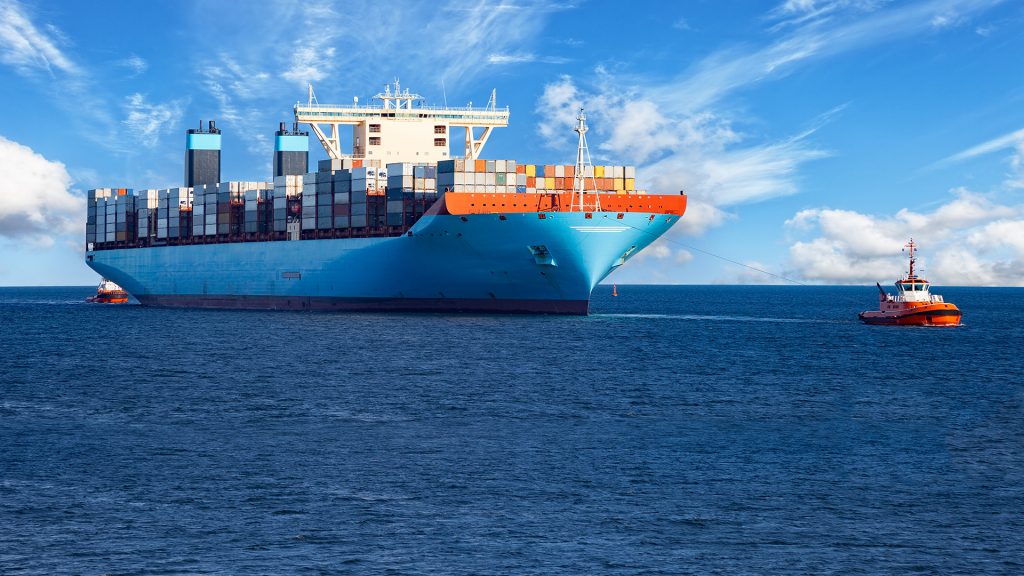Sea-freight is one among transportation activities, concerning water transport and sea means of transport, using vessels, piers, ports to carry goods from a country to another or from an area to another in the same region. Currently, sea-freight generates quite a large amount of sales. With the utilize of infrastructures and sea means of transport, areas of land, piers and bays as places for ships and vessels to be anchored, it is easier and more convenient to carry people and goods on sea routes.

- The advent of sea-freight – Sea-freight process
Sea-freight was invented in quite early times compared to other forms of freights such as air or train. From 5th century B.C, ancient countries such as Egypt, China,… had used seaway to foster commerce. Nowadays, with the development of technology, sea-freight is becoming more important to import and export activities. Moreover, infrastructures of sea-freight are also improved and upgraded when piers, ports systems are upgraded and vessels systems are more modern, with higher speed and more safety, bigger volume allowance.
- Advantages of sea-freight – Sea-freight process
Features of sea-freight contains some remarkable advantages such as:
- Sea-freight can be used to transport any kind of goods with any volume.
- Most sea-freight routes are natural and are exploited reasonably without any construction and repair costs.
- Sea-freight competency is very high.
- Form of sea transport is not limited as other form of transport.
Air-freight has limitation in size and volume of consignments, rail-freight has limitation in time, or road-freight has limitation in volume of consignments and time with long-distance routes.
- Delivery process in sea-freight – Sea-freight process
- Step 1: The transport companies shall pick the consignment at the warehouse of the exporter. In the process of coming to pick the goods the transport companies may optimize the cost.
- Step 2: The transport companies shall conduct customs declaration, customs clearance and inspection of the goods, set a pack of dossiers proving the origin and certificate of free sale of the export country.
- Step 3: The transport companies book for a ship schedule with a sea-freight company. The schedule shall be informed and confirmed with the clients as well as the time of transport so that the clients can balance the costs and times at its best.
- Step 4: Release Bill of Lading (B/L) to make goods ownership certificate. Conduct telex release. Transport companies shall release for the client a bill of lading, normally includes 3 origins and 3 copies to be the document to prove ownership of goods.
- Step 5: When the consignment arrived at the port of delivery, the transport company shall conduct customs declaration, customs clearance and goods inspections (if required) for the client. The transport company shall receive the pack of dossier from the importer, make declaration and set plans for customs goods.
- Step 6: Domestic transport companies shall deliver the goods from the port to the factory, warehouse of Vietnam recipient. After having finished customs clearance, transport companies shall deliver the goods from the sea port to the client’s company by truck or container.
- Step 7: Delivery and receiving:
Shipping staffs of freight-forwarder company shall reach the port or the agent of the sea-freight company to pay for documents’ cost, bulk cargo cost to receive delivery order (D/O). After that shipping staffs may bring D/O, commercial Invoice and Packing list to the port’s office to sign confirmation of D/O receiving to find location of goods, just there we have to retain a copy of D/O.
——–
HATECO LOGISTICS JSC
Logistics – Warehousing – Distribution – Freight Forwarding
Add: Sai Dong Industrial Zone;
Huynh Tan Phat St; Thach Ban Ward; Long Bien District;
Hanoi; Vietnam
Tel: +84.024.3259.5272/ Fax: +84.024.3259.5365

























